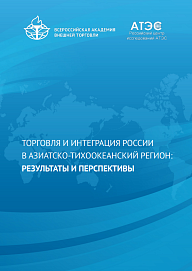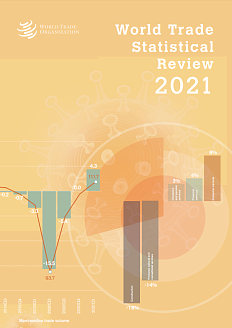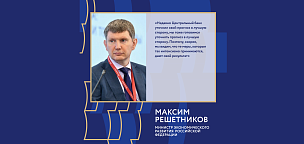Among the most noticeable consequences of the changed balance of power between the developing and the developed countries in the international trade are the crisis of the WTO and the trade war between China and the USA. Given the current trends in international trade, economic conflicts start to influence trade in services, innovation, and digital economy.
For Russia, the outcome of recent processes was that the Asia-Pacific region now appears much more often on Russia’s agenda when setting foreign economy priorities, implementing projects, building bilateral links, and strengthening various formats of multilateral relations. In the context of complicated relationships with the developed countries in recent years, Russia has been systematically increasing the share of the APAC countries in its exports, from 18.5% in 2010 to 29.1% in the first six months of 2019. Russia’s primary foreign trade partners remain unchanged. These are China (15.7% in foreign trade turnover in 2018), the USA (3.6%), Japan (3.1%), India (1.6%), and the Republic of Korea (3.6%). In the foreign trade structure of China, Russia accounts for 2.3%, with 0.7% belonging to the USA, 1.5% to Japan, 1.1% to India and 2.2% to the Republic of Korea.
Besides energy and mineral resources (which account for 64.1% of total exports), the commodity structure of Russia’s exports to APAC is composed of metal products (8.8%); wood, pulp and paper (5.3%); chemical products and natural rubber (5.1%); food products and agricultural raw products (5.0%); machines, equipment, and vehicles (4.2%). As for non-commodity non-energy exports, Russia’s main partners in the APAC region are China (30.1% in 2018), the USA (18.5%), and India (12.7%). The region’s contribution to attracting foreign direct investments to Russia has also increased. While between 2007 and 2015 the annual volume of investments from APAC was USD 0.5-3.2 bn, between 2016 and 2018 Russia attracted USD 23.6 bn in investments from APAC.
The authors of the report point to two main trends that are currently shaping the integration landscape in the APAC region:
- regional and mega-regional trade agreements which set trade preferences in the region; and
- rise of protectionism on the part of the USA and its efforts to reinforce bilateral agreements alongside a trade war with China.
When these two trends overlap, overt regionalism practices (such as removal of trade barriers, which leads to an expansion of trade) are replaced by a race for economic interests in the APAC region, with countries that don’t take part in agreements ousted from value-added chains. For Russia, this creates a challenge as far as its plans to expand its non-commodity exports to the APAC region are concerned and means that it will be necessary to step up the actions on its agenda for the development of trade relations with the Asia-Pacific countries.
A promising format of interaction is a practical implementation of the concept of the Greater Eurasian Partnership with an extended number of signatories to agreements with the participation of Russia and the EAEU, both in the sphere of services and investments and in preferential trade in goods. To support the leading role of APAC in Russia’s foreign economy agenda, it is necessary to reinforce the efforts to remove barriers to entering new markets, to carry out mutual investment projects, and to form a common regulatory framework. A delay in implementing the items on this agenda or insufficient determination to do this poses a risk that Russia will be gradually pushed out of value-added and trade chains in the APAC region.





